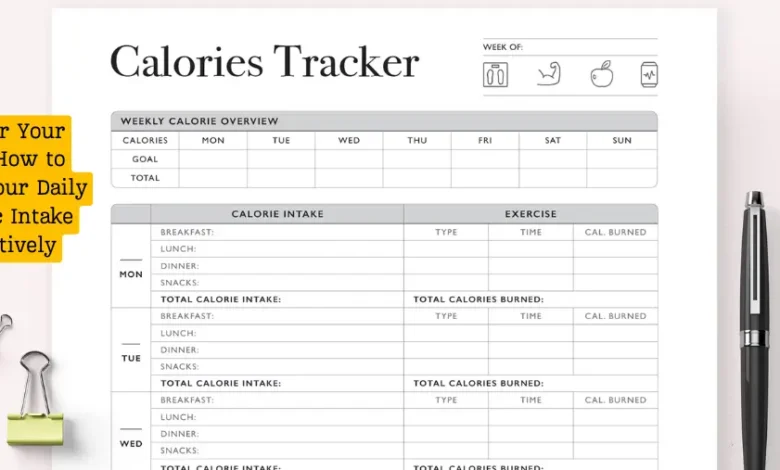How to Track Your Daily Caloric Intake Effectively
Tracking your daily caloric intake is a crucial step in achieving your health and fitness goals. Whether you're aiming to lose weight, gain muscle, or maintain a balanced diet, understanding how to monitor your calories can make all the difference. Here’s a comprehensive guide to help you track your daily caloric intake effectively and make informed decisions about your nutrition.

Why Track Your Daily Caloric Intake?
Tracking your caloric intake provides valuable insights into your eating habits and helps you make adjustments to meet your health goals. Here are a few reasons why it’s beneficial:
- Weight Management: Monitoring your calories helps you understand if you’re consuming more or fewer calories than your body needs, which is essential for weight loss or gain.
- Nutritional Balance: Tracking ensures you’re getting a balanced intake of macronutrients (proteins, fats, and carbohydrates) and micronutrients (vitamins and minerals).
- Goal Achievement: Whether you’re training for a marathon or trying to build muscle, tracking calories helps you align your diet with your fitness objectives.
Steps to Track Your Daily Caloric Intake
1. Determine Your Caloric Needs
Before you start tracking, calculate your daily caloric needs based on factors like age, gender, weight, height, and activity level. Use a calorie calculator or consult with a nutritionist to get an accurate estimate.
2. Choose a Tracking Method
There are several ways to track your calories. Choose the one that best suits your lifestyle:
- Mobile Apps: Apps like MyFitnessPal, Lose It!, and Cronometer offer user-friendly interfaces to log your food and track your caloric intake automatically.
- Food Diaries: Keep a manual food diary where you write down everything you eat and drink. Use nutrition labels and online databases to calculate the calories.
- Online Tools: Websites like Calorielab and MyFoodData provide calorie information for various foods, allowing you to track your intake online.
3. Log Your Food Intake
Accurate tracking begins with diligent logging. Here’s how:
- Weigh Your Food: Use a kitchen scale to measure portions accurately.
- Read Labels: Pay attention to serving sizes and calorie counts on food labels.
- Record Everything: Log every meal, snack, and beverage, including condiments and cooking oils.
4. Monitor Your Progress
Regularly review your logged data to assess your progress. Look for patterns and make adjustments as needed:
- Weekly Reviews: Check your weekly caloric intake against your goals.
- Adjust Portions: Modify your portion sizes based on whether you need to increase or decrease your calorie intake.
5. Adjust as Needed
Your caloric needs may change over time due to various factors such as changes in weight, activity level, or metabolic rate. Periodically reassess your needs and adjust your tracking accordingly.
Tips for Effective Caloric Tracking
- Be Consistent: Consistency is key to accurate tracking. Make it a daily habit to log your food intake.
- Stay Honest: Record everything you eat, even if it seems insignificant. Small bites and sips can add up.
- Use Technology: Leverage technology and apps that scan barcodes and offer extensive food databases to simplify tracking.
- Plan Your Meals: Planning meals in advance can help you stay on track with your caloric goals and avoid impulsive eating.
- Seek Professional Guidance: If you’re unsure about your caloric needs or how to track them, consult a dietitian or nutritionist for personalized advice.



That is a great tip particularly to those fresh to the blogosphere.
Simple but very precise information… Thank you for sharing this one.
A must read post!!